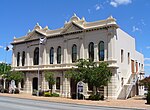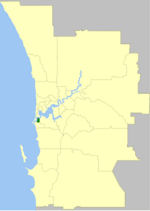HMAS Leeuwin (naval base)
HMAS Leeuwin is a former Royal Australian Navy (RAN) shore establishment,[note a] located in Fremantle, Western Australia. In use between 1940 and 1984, the base reopened in 1986 under the control of the Australian Army as Leeuwin Barracks. Commissioned in August 1940 as the naval depot for Fremantle, the base was adopted for use as a training facility after World War II, initially for RAN reservists and national servicemen, then as the Junior Recruit Training Establishment (JRTE) from 1960 until 1984. There was widespread sexual and physical abuse of trainees at the JRTE, with 10% of reports investigated by the Defence Abuse Response Taskforce relating to incidents at Leeuwin. Decommissioned from naval service in 1986, the base was later reopened under the control of the Australian Army as Leeuwin Barracks. In 2015, the Australian Government announced that the Leeuwin site will be sold off for residential development.
Excerpt from the Wikipedia article HMAS Leeuwin (naval base) (License: CC BY-SA 3.0, Authors).HMAS Leeuwin (naval base)
Preston Point Road, Town Of East Fremantle
Geographical coordinates (GPS) Address Nearby Places Show on map
Geographical coordinates (GPS)
| Latitude | Longitude |
|---|---|
| N -32.028333333333 ° | E 115.76583333333 ° |
Address
Preston Point Road
6158 Town Of East Fremantle, East Fremantle
Western Australia, Australia
Open on Google Maps









